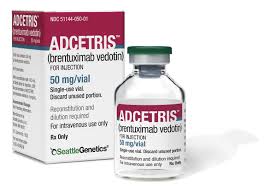Article
Can We Fight Opioid Use Disorder by Filling Data and Policy Gaps?
Author(s):
Which data, policy, and information gaps exist throughout the healthcare system and need filling in order to combat opioid use disorder (OUD) through better prevention and treatment strategies? Two recent reports discuss how these gaps are worsening efforts to fight OUD.
Which data, policy and information gaps exist throughout the healthcare system and need filling in order to combat opioid use disorder (OUD) through better prevention and treatment strategies?
Two recent reports discuss how these gaps are worsening efforts to fight OUD. The Deloitte Center for Health Solutions and the Network for Excellence in Health Innovation (NEHI) interviewed their stakeholders, including health plans, pharmacy benefit managers (PBMs), healthcare systems, other healthcare associations, government officials, pharmaceutical companies, pharmaceutical distributors, and others to unearth possible strategies to improve prevention and treatment.
The Deloitte report focused on leveraging data and technology, expanding those methods away from their original focus of fighting fraud, waste, and abuse.1 By using data analytics and predictive modeling, health plans can reduce the chance of OUD developing in patients taking opioids who might have risk factors that could predispose them to developing dependence later, such as depression or a family history of the disease.
To highlight treatment access issues, Deloitte built an interactive map that zeroes in on the geographical distribution of medication-assisted therapy (MAT) facilities in the United States, opioid-prescription rates, and opioid-related death rates. The map shows that some areas of the country have no treatment for OUD available.
Deloitte wrote the report for 3 reasons, said George Van Antwerp, senior manager, strategy and operations, in an interview with The American Journal of Managed Care® (AJMC®).
“Socially, this has become such a crisis in the United States that we felt it was important to shine some light on this issue,” he said. Second, he said, clients across all parts of healthcare were asking questions about the issue, and third, there are rapid changes happening in the way of legislation and utilization management when it comes to opioids.
As more health plans use predictive modeling, there’s a better likelihood that data can be used to drive results, Van Antwerp said.
“If we can use the data to risk score people, predict their risk, their likelihood of becoming addicted and intervene earlier, in many cases you have a better chance to help them get the right treatment, help them understand the risk,” he said.
Susan Dentzer, NEHI’s president and chief executive officer, said much the same thing.
“We have been alarmed about the growing toll of opioid use disorder epidemic and we have done some work over the past couple of years looking at the work that our membership organizations have done to address the issue,” said Dentzer. NEHI is a nonpartisan research nonprofit that counts payers, pharmaceutical firms, nonprofits, and other organizations among its members.
While she noted the obvious problems, like an insufficient supply of MAT facilities or addiction specialists trained to provide help to those seeking to recover, there are also what she called “second-order issues” that impede success.
There are obstacles in what she called the “healthcare information infrastructure architecture” as a result of information being blocked or siloed, and to illustrate it, NEHI outlined a multi-step process showing best- and worst-case scenarios for optimal opioid prescribing.2
The report makes 6 recommendations for a best practice in opioid prescribing
- Evaluate the pain; determine effective treatments, including nonpharmacological ones and nonopioid medications.
- Consult clinical decision guidelines that incorporate the CDC guidelines. (The NEHI report noted that the CDC guidelines are not intended for active cancer, palliative care, or end-of-life care, but some doctors are reporting that is an unintended consequence of the guidelines.)
- Check prescription drug monitoring programs (PDMPs) for past use of opioids.
- Use electronic prescribing.
- Have patients sign a pain contract that acknowledges risk.
- Take steps to offer help if dependence occurs.
However, efforts are impeded by data collection that isn’t streamlined, PDMPs that vary from state to state in terms of functionality, and a lack of interoperability with electronic health records, both reports noted.
“Everywhere you look there’s a problem of bad movement of information,” Dentzer said.
In addition, electronic prescribing of controlled substances is difficult and time-consuming for busy providers due to Drug Enforcement Agency regulations that require the usage of a different system for drugs that are not controlled, Dentzer said.
There’s also a need for evidence-based standards and quality metrics to define successful treatment, the Deloitte report noted.
Funding Issues
With so many players involved at every level, neither report mentioned what it will cost the United States to undertake an overhaul of these systems. Some of the cost, such as coming up with a uniform PDMP, has not been calculated, Dentzer said.
Van Antwerp said any discussion of funding needs to include “the value of prevention and the value of care management and the value of MAT.” In addition, he said, society is starting to gain a greater insight into the direct and indirect costs of complications of OUD.
Unintended Consequences
Some doctors are reporting that it is getting more difficult to treat patients with cancer or other long-term pain, and Thursday an editorial in JAMA Oncology noted that the CDC’s opioid guidance conflicts with how patients with cancer, as well as those post-treatment, are managed.
Both Van Antwerp and Dentzer acknowledged those concerns.
“'Are we overcorrecting?' is essentially the key question,” Van Antwerp said.
Without evidence-based standards, “the easy answer is to be very restrictive” with prescribing opioids, he said. But as an understanding of risk grows, perhaps the trend will shift back.
In addition, restrictive prescribing to people who already use opioids may also have the unintended effect of sending them to the illicit drug trade to use heroin and fentanyl.
Privacy Issues
The release of information about substance use disorder treatment is protected under a regulation known as 42 CFR Part 2, and there are some in the field who think that there are some pieces of the law that could be changed in order to facilitate improved integration between addiction providers and other parts of the healthcare system. But because stigma still exists with getting treatment, any changes that Congress considers would have to be carefully considered, both organizations say.
NEHI gave the example of a provider who has a pregnant patient who also is getting treatment for an opioid problem. During the same visit, her information must be entered separately into 2 different systems, creating a more complex workflow for the provider. “That just doesn’t make any sense,” said Dentzer.
Any efforts that involve the increased collection of patient data with the aim to improve their care may run into some resistance, and Van Antwerp said it is not an easy topic to discuss but one that has to happen. Patients need to know that the collection of data “offers value to them and not just to somebody else,” he said, and for a clinical purpose to better understand risk.
References
1. Preston B, Van Antwerp G, Korba C. Strategies for addressing the opioid epidemic. Deloitte Center for Health Solutions. May 18, 2018. www.deloitte.com/insights/us/en/industry/health-care/strategies-health-plans-pbms-to-stem-opioid-crisis-with-data-technology.html. Accessed May 31, 2018.
2. Addressing data and information gaps contributing to opioid use disorder. Network for Excellence in Health Innovation. May 23, 2018. www.nehi.net/publications/80-addressing-data-and-information-gaps-contributing-to-opioid-use-disorder/view. Accessed May 31, 2018.
Newsletter
Stay ahead of policy, cost, and value—subscribe to AJMC for expert insights at the intersection of clinical care and health economics.





